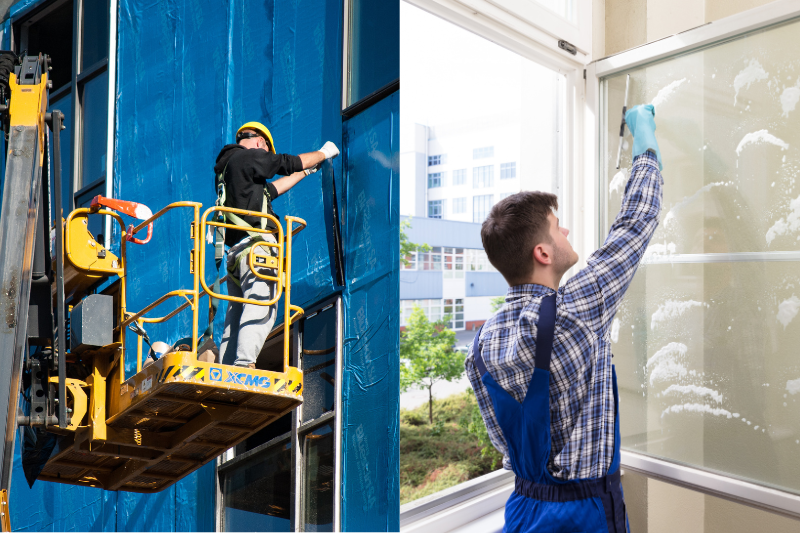How to Reduce Insulation and Glazing Specifications for a 7-Star Energy Rating

Insulation and glazing are often considered the main drivers behind energy efficiency in a home and for a good reason. They decide how much heat enters the interiors and how much of it escapes. Problems arise when people start focusing more on materials and expensive upgrades instead of working on passive design principles to improve energy efficiency.
Sure, better materials give you a better chance of achieving a 7-star rating, but that is not always the case. There are many nuances in this picture that need to be discussed and understood. That is what we shall be doing today.
Understanding How Insulation and Glazing Affect Energy Ratings
Achieving a 7-star energy rating requires a careful balance between energy efficiency, cost, and compliance with the Nationwide House Energy Rating Scheme (NatHERs). Many builders and homeowners mistakenly assume that installing expensive high-spec insulation and glazing will help them achieve a 7-star rating.
The reality is that choosing smart design strategies can reduce the need for costly upgrades while enhancing the energy efficiency of your space.
How Do Insulation and Glazing Affect Energy Ratings?
Insulation plays a key role in preventing heat loss in winter and reducing heat gain in summer. It is measured using the R-value, where a higher number indicates better insulation.
While it might seem logical to keep increasing the R-value to achieve a 7-star rating, it is not cost-effective. Beyond a certain level, additional insulation offers minimal improvement in energy efficiency but adds significantly to the cost.
Glazing is another major factor that affects energy efficiency. Windows are usually the weakest points in a building’s thermal scheme because glass transfers heat more easily than insulated walls. Glazing is measured by U-value, where the lower number indicates better insulation properties.
In addition, the Solar Heat Gain Coefficient (SHGC) measures how much solar radiation a window allows inside: Lower SHGC is needed in warmer climates, while higher SHGC is required in colder climates.
The Tradeoff Between Passive Design and Expensive Materials
One of the biggest misconceptions about achieving a 7-star energy rating is that better materials always lead to better ratings. In reality, a well-designed home can achieve a higher Star rating without excessive insulation or glazing.
For instance, orienting living areas to the north allows natural sunlight to provide free heating in winter, reducing heating costs.
Similarly, designing openable windows and cross-ventilation helps cool the house in summer, decreasing the need for high-performing glazing. Having a chat with your builder about these details is a good idea to ensure everyone is on the same page.
NatHERs and Energy Rating
NatHERs recommends measuring energy efficiency standards using FirstRate5, HERO, AccuRate, and BersPro. These tools calculate a home’s heating and cooling loads, which measure how much artificial heating or cooling is needed to maintain a comfortable internal temperature.
The software considers multiple factors, such as insulation, glazing, shading, ventilation, and room orientation. Instead of focusing solely on upgrading materials, energy assessors use these tools to model different design strategies and determine the most cost-effective way to achieve a 7-star rating.
Passive Design Techniques to Enhance Energy Efficiency
Passive design strategies are among the best ways to achieve a 7-star energy rating. Let’s explore the details of passive design and how it works.
1. External Shading and Ventilation
Shading is crucial in controlling heat gain in Australia’s warm climate. Sunlight in summer can raise the internal temperature, but the same sunlight can be used in winter to achieve higher indoor heat. Various design elements like adjustable eaves and overhangs allow homeowners to block harsh summer sun while letting in sunlight during winter.
Ventilation is another considerable aspect that reduces the need for artificial cooling. Cross-ventilation can help expel hot air and cool down the home without relying on air conditioning. For instance, placing windows on the opposite side of the room allows breezes to pass through and create a cooling effect.
2. Smart Zoning
A well-planned home layout can significantly impact energy efficiency by minimizing heat loss and maximizing passive use of both heating and cooling. Placing the main living areas on the north side of the home allows them to receive natural sunlight in winter.
Bedrooms that do not require much daytime heat can be placed on the east or west side, while garages, laundry, and storage rooms should be positioned on the south.
Maximize Energy Efficiency With PassivEnergy
There are many design modifications and tweaks that can be performed to achieve a higher star rating instead of going for the most expensive materials and upgrades. For that, you need a consultant like PassivEnergy who understands this area extensively.
We are at the forefront of sustainable housing in Australia, providing reliable, high-quality sustainability reports at the best prices. With a team of highly experienced members, we promise world-class services, ranging from crafting 7-star energy reports to waste management plans.
If you want your building to achieve a 7-star rating with minimal spending, contact PassivEnergy today or Download our Free 7 star Energy Rating eBook. Let us save you loads of money in the long run.
Here's what to do next!
Free Guide
Request a Quote
Free Consultation

Rob Iacono
Rob is passionate about building strong relationships with his clients, offering practical, no-nonsense advice, and delivering cost-effective solutions that produce positive results. His commitment to sustainability and client satisfaction is the cornerstone of everything he does.
Accreditations:
- NatHERS Assessment (FirstRate 5, HERO)
- BASIX Assessments
- Whole of Homes Assessments - BESS (Advanced) trained